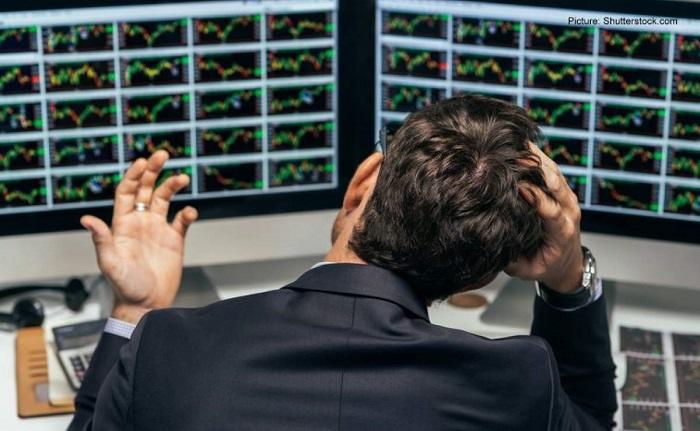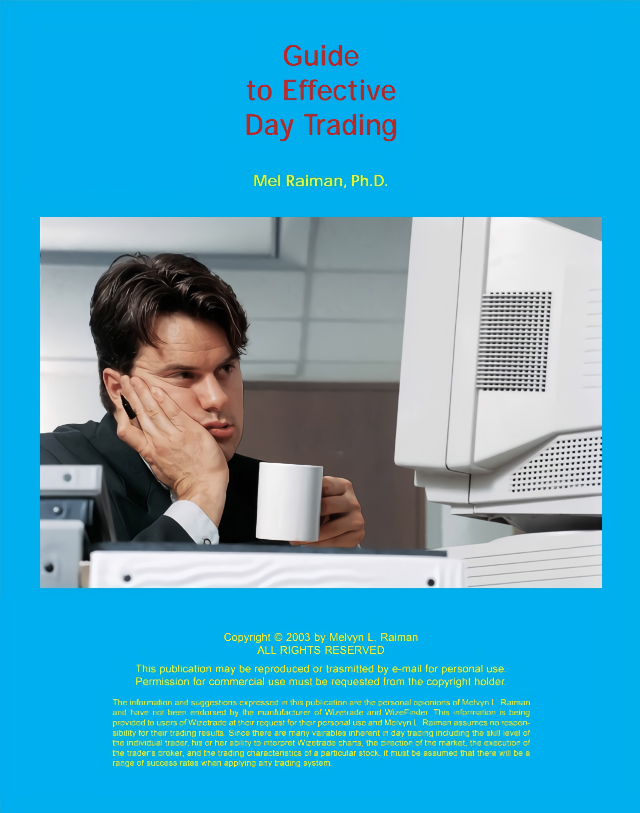Building a trading system is not that easy because in addition to applying it, a trader needs to evaluate and develop the system from time to time.
Have you ever been in a situation where you have tried some strategies or followed all the recommended signals, but you still cannot enjoy a consistent profit? What do you think are the reasons behind such a strange occurrence?

As a trader, you must come across the question in your mind, especially if you have devoted much capital and time to your trading. It is a good sign because it means you are aware of what went wrong in your trading activity. Here are 5 mistakes that may lead to your trading system not working and cause your account's demise.
Contents
1. Underprepared
Planning for every step you will take is very useful. However, many traders like to trade without a certain strategy, ignoring the notion that market uncertainties are best faced with a set of a fixed trading plan. They might realize their mistake and fix their approach, but others would give up without really knowing their lack of preparation.
Even with a trading system that comes with its own rules, you need to add some extra plans sometimes. Things like what would you do should the price move against your trade or how you adjust your position when the market seems to provide more opportunities should be considered even before you make an entry position.
Planning a solid strategy is not that hard. It is a matter of a set of rules you need to follow every time you trade. A plan must fit and match your financial situation and lifestyle, so it is different for each trade. A trading plan is meant to make your transactions much easier and prevent you from getting off track.
Analyze different strategies and styles of trading and then you can put them together into a trading plan that works perfectly for you. Trust me, it is important.
2. Too Emotional
Emotional turmoil can be a big factor in forex trading. The best solution is to keep it out of your trading strategy. But sometimes, you cannot prevent it from meddling with your trading activity. This usually happens without you realizing it. When you experience a winning streak, you will tend to overestimate your abilities and want to earn more money. Or when you are faced with consecutive losses, you will feel guilty and too afraid of making another trade.
This is the main reason why your trading system can't work properly. A trading system needs a disciplined approach in its application. When you become too emotional, every decision can lead to out-of-plan outtakes. On the other hand, experienced traders can manage their overwhelmed emotions and think rationally; whatever happens, they stick to their plan.
3. Overtrading
This one mistake is actually related to emotional trading. The desire to earn money in a short time can cause many problems. You should know when to trade and when not to trade. If you ignore your trading system and increase your positions without any real reasons, you will fall into the trap of overtrading. This in turn makes your trading system useless.
4. Lacking Knowledge
Forex trading requires you to invest not only in your fund but also in your time. Some traders ignore this crucial step, which is learning how the market operates. Knowing everything about it is very important. In fact, forex learning should not stop after you open a real account and declare yourself as a full-time trader. You must keep finding new information as foreign exchange is a market that keeps evolving. There is always something new from time to time, be it based on the increasing of the trading volumes, the way the market participants act, or the improvement of the trading technology.
For example, you already have a working trading system that usually works in a normal market condition. You're so confident that it will always work that you aren't in touch with the latest development that disrupts the market dynamics temporarily. As a result, your trading system can't work as usual and you suffer a big loss due to your ignorance.
See Also:
Hence, it will be better to find books written by other traders or economic experts. Following blogs and participating in the trading forums are also recommended to always upgrade your knowledge. No space for laziness if you want to be successful.
5. In Denial
In the market, many traders lost their money but they insist on applying the same trading style. They hope that the trend will reverse itself then they will get the money that they lost before. Well, it is very likely won't happen. The best-case scenario that they can have is to admit their mistake and close the position. However, they choose the worst scenario where they double their position and do not use the stop loss. If you do not want to end up as a failed trader, open your eyes widely, be focused, and don't be shy to admit that you have made a mistake. After all, it is part of the learning process.
Evaluate Your Trading Performance
Making mistakes is a common thing; everybody experiences it at some point in their lives so there's no need to be embarrassed. Forex trading mistakes are also quite common, especially for rookie traders. When you get into a new market environment, you probably make some wrong decisions that take you to move backward. A profitable trader knows how to learn from their mistakes, so it's best if you start to do the same thing.
Imagine if you are a beginner and you don't make an evaluation of your trading activities; how can you find out if the trading system works for you or not? Just making an assumption is not enough. In the end, you will be forced to move on to other trading systems when the result is not profitable. Without evaluation, you will have no idea what really causes failure. It could be from the trading system itself, but it could also be from your errors as a trader. If the actual reason is the second one, then you will be trapped in the pursuit of the best trading system without any real success.
Just like a student at school, you need to make a report to evaluate your trading performance. The main purpose is to figure out the advantages and disadvantages of a trading system. By identifying them, you can get the three practical benefits as follows:
- Fixing the weak points of the trading system. The evaluation results can highlight the frequent errors in trading execution. For instance, you can know at what time or what currency pairs that result in losses. So, you can fix the mistakes by avoiding the problem sources or finding solutions to solve them.
- Knowing the favorable market conditions and pairs. You can conclude the right market conditions, currency pairs, and the trading strategy that can generate the best profit. The expectation is that the trading system can consistently repeat its good performance in those specific situations.
- Measuring the highest profit and the biggest loss.
This point is the most important of a trading system evaluation. Every time you open a position, you will know where the maximum risk should lay and how much your profit target should be. In this way, your trading activity can acquire the ideal measurement of expectancies when it comes to profits and losses.
After going through the evaluation process, you can shape your trading system to replicate the previous profitable trades while anticipating the worst scenarios learned from prior mistakes.
How to Measure Your Trading Performance?
Let's say you learn to develop your own trading system and want to know its performance. How is the practical way to test its effectiveness?
First, you must set the parameters or benchmarks that will be used as the criteria to assess the performance of your trading system. One of the ways is to find the percentage of the win (win rate). In the hands of an expert, even a trading system with a small win rate can generate a promising Profit Factor.
To learn further about the parameters of trading system evaluation, there are more components than just a win rate that you need to fully grasp. According to David Jenyns, one of the experts in making a profitable trading system, there are 7 parameters to measure the performance of a trading system:
1. Win-to-Loss Ratio (Win-Rate)
As previously mentioned, a Win-to-Loss Ratio or win rate is an important aspect to know how your trading system works in a real market. In simple ways, the Win-to-Loss Ratio can be defined as a comparison between the number of a win versus loss on average. If the win ratio is higher than that of the loss, it means that your trading system is on the right track.
Nevertheless, don't be mistaken for assuming that this statistic is self-evident, because the Win-to-Loss Ratio does not calculate how much the win and the loss is. Particular trading systems can show a bad Win-to-Loss Ratio, but it is still profitable. For example, a Turtle Trading System has a ratio of 40:60, but it is regarded as a successful system because of how much the profit is gained compared to the amount of loss.
2. Average Win and Loss
Besides calculating the Win-to-loss Ratio, you need to make sure that the average pip or amount of money when you win is bigger than the average loss. Let's say your backtest consists of 200 trades. About 150 of your trades fail and only 50 of them are profitable. Despite the tragic 15:75 win rate, the average win is $2000 whereas the average Loss is $500. In the end, the whole trading system is still profitable because (50x$2000) - (150x$500) = $25,000.
3. Expectancy
Expectancy is the most significant statistic in measuring the success of a trading system because it measures the system performance more comprehensively.
The formula is:
(% Win x Average Win Size) - (% Loss x Average Loss Size)
For example, if a trading system has an 80% opportunity to win $100 and a 20% opportunity to lose $1000, then the expectancy will be:
(80% x $ 100) - (20% x $ 1000) or $ 80 - $ 200 = -$120
It is obvious that the system will cause a big loss. Now, what if there is a trading system that is exactly the opposite of it? Suppose this new system has a 20% opportunity to win $1000 and an 80% opportunity to lose $100. The expectancy will be far superior because:
(20% x $ 1000) - (80% x $ 100) or $ 200 - $ 80 = +$120
In shorts, the expectancy earns more dollars in return and is expected from every dollar risked in a trading system. If a system has +120 expectancy, it means you can expect to get an average return 120 times from the capital used for trading.
However, it is just a sample number. The reality is it will be very difficult to reach the expectancy up to hundreds as abovementioned. How big is the expectancy to measure the success of a realistic trading system? As a practical rule, Jenyns mentioned that if you can reach the expectancy of $0.60, then you are moving in the right direction towards a successful trading system.
4. Maximum Consecutive Losses
Review your test results to see how many consecutive losses that your trading system has encountered in a profitable condition. This is important to figure out the statistical data that will give you a sort of confidence when you repeatedly lose, as well as to measure the success of the trading system used.
For instance, if you are facing five or six losses in a row without knowing how much the maximum consecutive loss your system can bear, you might think that the trading system is wrong and does not work properly. This is an error that many beginners experience. In fact, your trading system may lose 10 times, but it is still profitable.
5. Maximum Drawdown
Maximum Drawdown is the worst period of "dropping from the top" in your trading system performance, regardless of how long the loss happened and how many times it happened.
The statistic is usually automatically calculated if your trading account is connected to a performance analyzer such as Myfxbook. There is no certain standard in measuring the drawdown. From the numbers appeared, all you need to do is ask yourself: are you comfortable with such a drawdown? If you aren't, then you might need to modify the trading system you have made.
This is back to your risk/reward ratio. In accordance with the "high risk, high return" policy, the bigger risk you can bear the bigger reward you can get. However, how much is the risk that you can bear? If a trading system can generate a return of 140% every year but the drawdown is 80%, are you ready to face the possibility of losing 80% of your total capital when using it? Remember, the most important thing in choosing a good trading system is to use a system that you are comfortable with.
6. Number of Trades
One important data that is rarely discussed is how many trading opportunities a system generates in one period. A good trading system should not give signals too few or too often. The amount should be approximately the same as the number of trades that you can open realistically.
If a trading system gives too many signals, you will be forced to choose among several signals at once. This is a dangerous situation because a trading system would be ambiguous and depends on the trader's subjectivity. On the other hand, if a trading system creates too few trading opportunities, you might not get the best opportunity to trade in the market.
7. Profitability
The last parameter in measuring the success of a trading system and perhaps the most important is profitability or Return on Investment (ROI) in a year. Profit is the final goal of forex trading for anyone, so it can be said that it is the most important parameter. However, in measuring the success of the trading system, it also needs to balance the other abovementioned parameters as well.
Now that you discover the reason behind a trading system failure and how to fix it, are you ready to begin your journey and take all the risks that come with it? To strengthen your stance, we have prepared this inspiring content about finding grounds when beginning a journey to become a successful trader.

 Dedicated FREE FOREX VPS
Dedicated FREE FOREX VPS Free FOREX Virtual Private Server
Free FOREX Virtual Private Server MT4 Demo Contest, Get $500
MT4 Demo Contest, Get $500 Sign Up for an Account, Claim 60% Deposit Bonus
Sign Up for an Account, Claim 60% Deposit Bonus Free MT4/MT5 VPS 2024
Free MT4/MT5 VPS 2024 Send E-mail and Get Free Merchandise
Send E-mail and Get Free Merchandise $1K Refer a Friend Bonus for Pepperstone Pro clients
$1K Refer a Friend Bonus for Pepperstone Pro clients Maximize Your Earnings with 100% Deposit bonus
Maximize Your Earnings with 100% Deposit bonus Trade to Win, $5,000 Monthly Demo Contest
Trade to Win, $5,000 Monthly Demo Contest Claim 30% + 15% Deposit Bonus from LiteFinance
Claim 30% + 15% Deposit Bonus from LiteFinance













